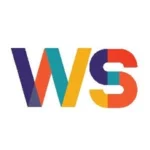Up until about five years ago, I would regularly say, “I’m not a math person” or “I’m bad at math.” Like lots of folks around the country, I felt deep-seated math anxiety stemming from my experiences with timed tests and flashcards as an elementary schooler. Oh, how many hours were spent at my dinner table trying to memorize 8 x 8. Strong mental calculations and fact memory were prized over inquiry and deep thinking. This led to tutors, repeats of Algebra I, and a constant feeling of fear and worry when it came to anything with numbers. Doors for possible careers were never even considered because they involved math.
A small shimmer of light emerged in undergrad in my “math for non-majors” class, consisting of six young women all of whom had faced similar arithmetical woes. Our professor, a lovely man from Lebanon, engaged us with complex, visual problem-solving challenges and encouraged us to make visual models of our thinking. It was my first and only A in mathematics in an academic career that spanned kindergarten through post-master’s work.
Nevertheless, as my career continued, I regularly expressed my negative feelings about mathematics to myself and aloud, even in front of children. Until the day I was called out — hard. A dear, trusted colleague said to me, “You teach growth mindset… You promote that our students can do anything. It’s time for you to stop saying you’re bad at math.”
Oh, how I will be forever grateful to this colleague for pointedly calling out my poor modeling behavior for all whom I encountered.
Embracing Continuous Learning

Since that time, I have sought out areas of discomfort, whether that’s sitting in Algebra I class with eighth graders or making area models and multiplication arrays (rows and columns) or choral counting with PreK children or attending a conference full of math teachers and experts. It’s all about soaking up the what, why, and how of learning mathematics as fast as I can.
I can’t help but wonder why I was never taught math beyond the standard algorithm and memorization of steps? Today I stand in awe as my students play with numbers and discover how they work together. By exploring mathematics in this more visual and problem-solving format, I actually understand the math when it’s translated into equations.
I’ve made my shift in mindset verbal, visible, and vulnerable. Modeling that we can always continue to learn, even if we have to go back to elementary school, sits at the heart of my mission as an educator.
Since moving to a school rooted in NCTM’s Standards for Mathematical Practice, which establishes conceptual understanding before procedural fluency, I am not only more comfortable with math but also more confident in owning what I don’t know. I am able to realize the beauty and creativity of mathematics and problem solving by watching our students, guided by our teachers, explore numerical relationships through patterns, number talks, and low-floor/high-ceiling tasks. These tasks have easy entry points with many paths to an answer, ensuring productive struggle and collaboration in the process. As a result, I more clearly grasp that math cannot be encapsulated in the pursuit of one correct answer via one correct strategy.
Colleagues have remarked that my honesty about what I’ve learned or don’t understand helps them anticipate student responses and plan more effectively. They can tap into the ways I might approach a problem, like drawing upon an inefficient model, to consider how students in their classes who haven’t yet reached proficiency might respond to a prompt.
I’ve learned to think more flexibly, draw models, and apply a toolbox of strategies to various mathematical tasks. (A reading list of strategies is below.) I’m still working to remember all my options and perform them with efficiency, but I’m not afraid to try and be wrong in math — anymore.
I am grateful to my teachers* who are so kind and patient, recognizing that while I feel confident in many skills in teaching and learning, for this one, I feel I am at my most fragile. Conquering my fear of the math monster is nothing short of a miracle. I now understand there is no such thing as a math person and a non-math person; we are all mathematicians. We just may not have it all figured it out…yet.
*Jenny Rittberg, Carrie Norry, Jill Gough, Becky Holden, Kerry Coote, Jeff Edmonds, Jo Boaler, Christina Tondevold, Robert Kaplinsky, Marian Dingle, and Tim Kanold, all have my deepest respect and thanks, even if we have never met.*
Reading List of Math Strategies and Pedagogy
Boaler, Jo. Mathematical Mindsets: Unleashing Students’ Potential through Creative Math, Inspiring Messages, and Innovative Teaching. Jossey-Bass & Pfeiffer Imprints, 2016.
Fletcher, Graham. “3-Act Tasks.” Questioning My Metacognition, 15 Sept. 2019, gfletchy.com/3-act-lessons/.
Gough, Jill. “Number Talks: Developing Fluency, Flexibility, and Conceptual Understanding #AuthorAndIllustrate.” Experiments in Learning by Doing, 15 Oct. 2019, jplgough.blog/2019/10/15/number-talks-developing-fluency-flexibility-and-conceptual-understanding-authorandillustrate/.
Huinker, DeAnn, and Victoria Bill. Taking Action: Implementing Effective Mathematics Teaching Practices in K-Grade 5. National Council of Teachers of Mathematics, 2017.
Johnston Zager, Tracy. Becoming The Math Teacher You Wish You’d Had. Stenhouse Publishers, 2017.
Kaplinsky, Robert. “Open Middle®.” Open Middle®, 17 Dec. 2015, www.openmiddle.com/.
Smith, Margaret Schwan, et al. The 5 Practices in Practice: Successfully Orchestrating Mathematics Discussions in Your Elementary Classroom. Corwin, A SAGE Company, 2020.





